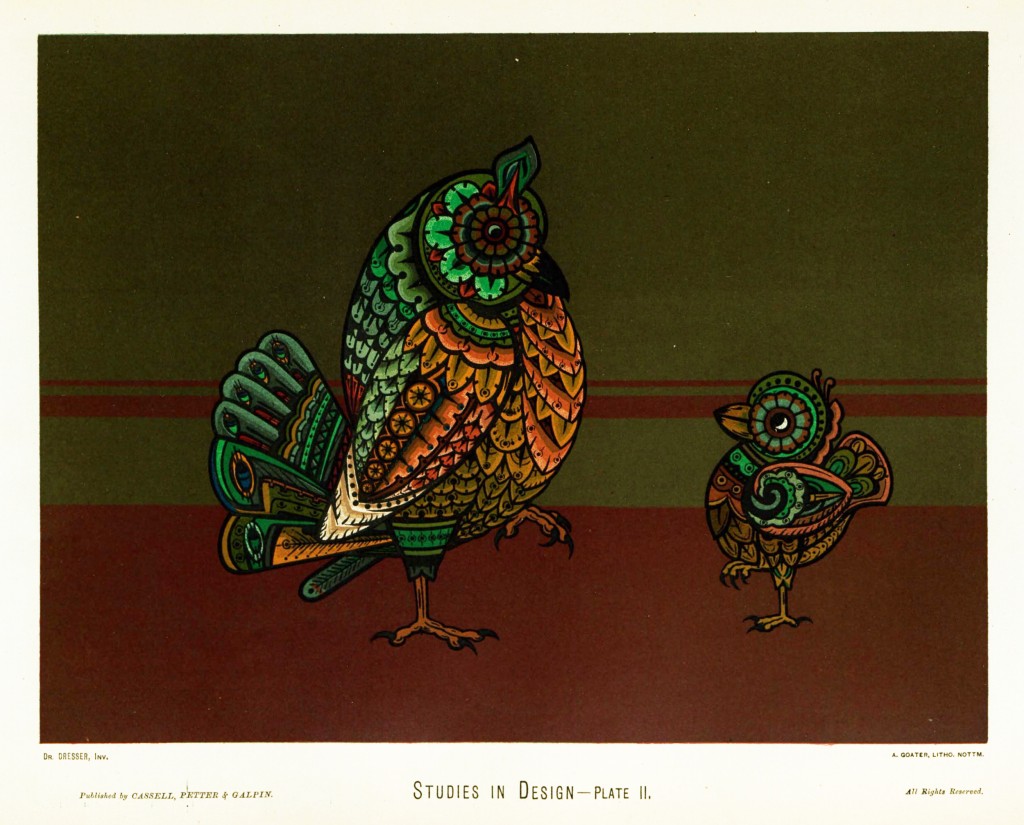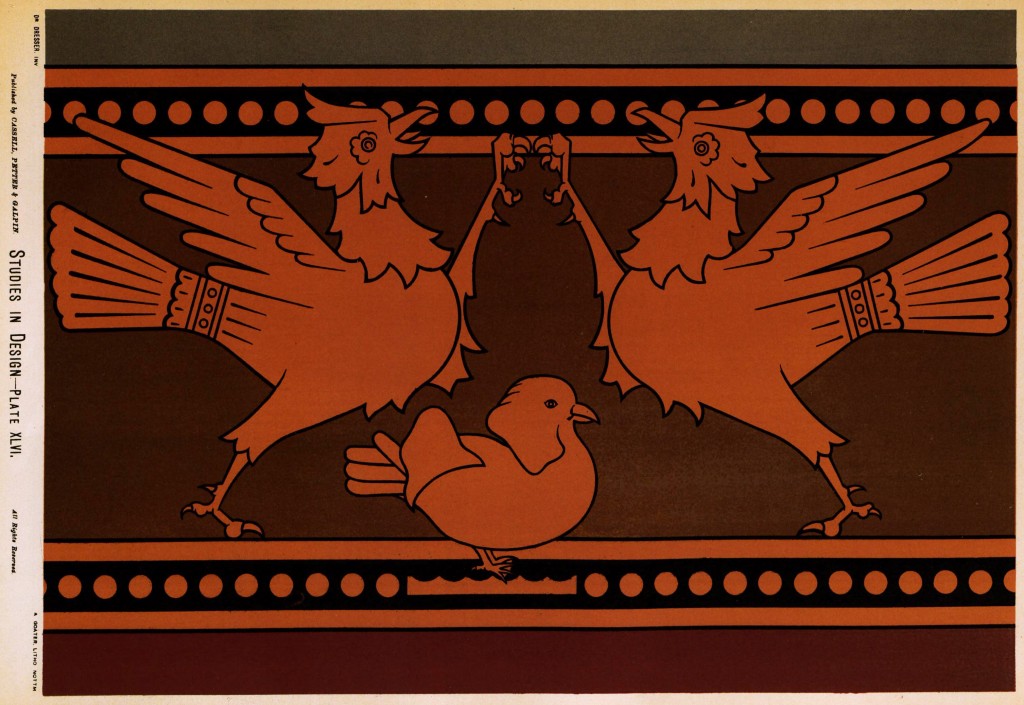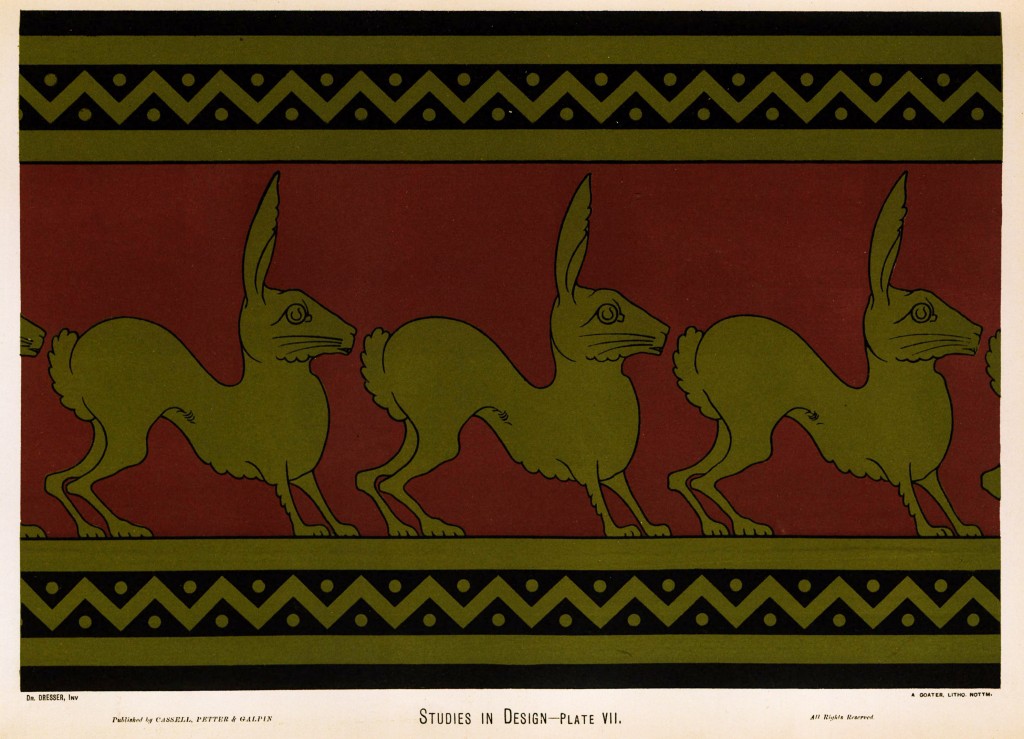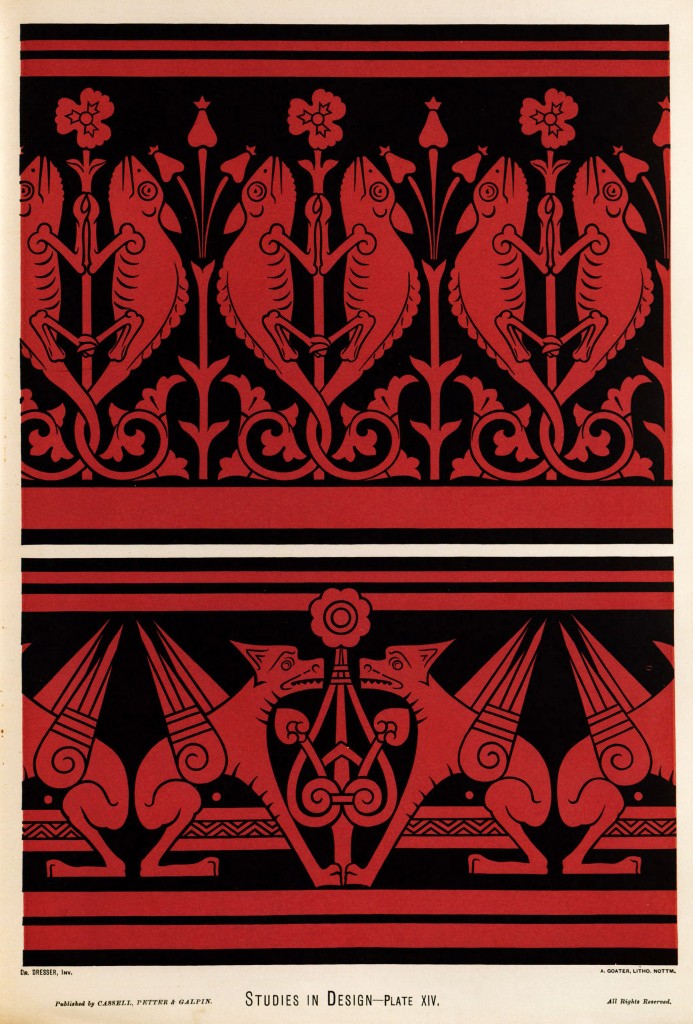Comical Animal Designs by Christopher Dresser 1876
In ornament humour finds expression in the grotesque. Humour is no new-characteristic of the human race; it is as old and as natural as love. This being the case, we find the grotesque in all styles of ornament, but in some it predominates, while in others it is of rare occurrence. A curious manifestation of the grotesque is to be found in Celtic ornament, where the majority of the forms employed are monstrosities of some description. Professor Westwood, in his beautiful work on Celtic ornament, gives some fine illustrations of old Celtic manuscripts in which this class of ornament prevails: these are well worthy of careful study. It will be noticed that while Celtic ornament consists almost wholly of grotesques, no attempt is made at the representation of natural objects. We discern birds and beasts and fishes, but the bird is not a sparrow, nor a snipe, nor a partridge, nor, indeed, any specific kind of bird. Such characters are given as convey to the mind the thought of a bird, but all specific characteristics are studiously
avoided. In some cases the neck of a bird, or the body of a beast, is formed of strap-work; and two animals are not unfrequently twined together in a curious and intricate manner. All this is perfectly right, for the whole composition is ornamental and not naturalistic, and the effect produced is highly humorous. In the present work Plate VI gives illustrations of this class of grotesque.
Grotesques should never be very naturalistic in treatment ; and if in any distorted or unnatural position, they should be obviously unreal in character. The production in decorative art of anything that appears always to be suffering pain should be carefully avoided. […]
In my “Principles of Decorative Design” I have considered grotesques, and I must refer the student to that little work for further information on this subject; but, to summarise the laws which govern the production of ” monsters ” in ornament, we may say, —
1. The farther the grotesque is removed from a natural representation of what is intended the better it is, provided that those characters are adopted which render the purpose of the representation at once obvious.
2. The drawing of all grotesques must be vigorous and energetic. Grotesques must be expressed with such force and power as will give to them apparent reality, however impossible their formation may be. Grotesques are to ornament what humour is to literature. Nothing is worse than a feeble joke ; in like manner a feeble grotesque can only be despicable. The amusing must appear to be earnest.
3. A grotesque must reveal, by its nature or formation, knowledge on the part of its producer. Humour, to be acceptable to the educated, must be accompanied with the manifestation of knowledge. An ignorant joke is unpleasant to the educated even if the wit be obvious; in like manner all grotesques must reveal the knowledge of their producers, and be of such a character as shall show that their producers were men of learning. – Christopher Dresser, Ph.D.





